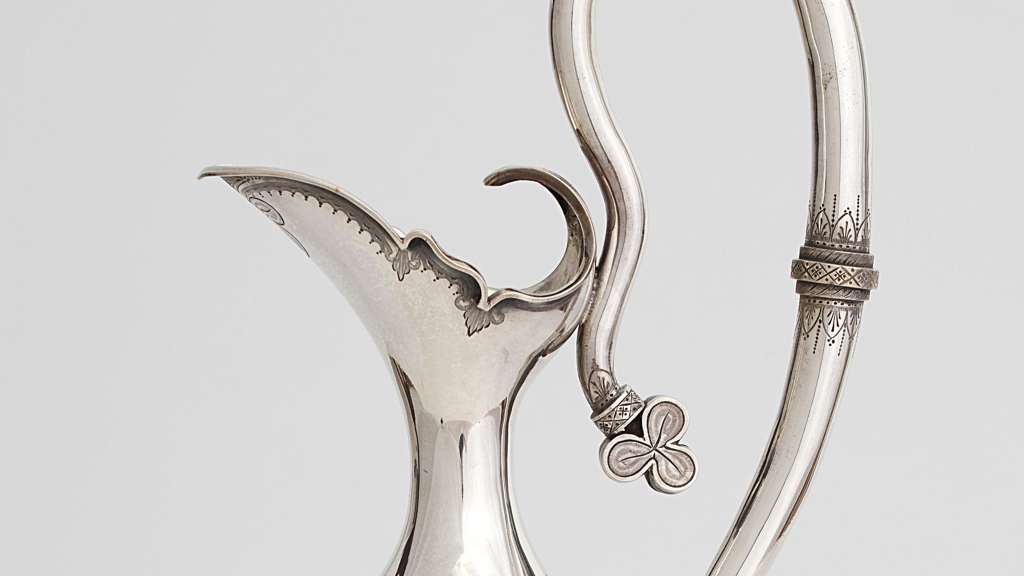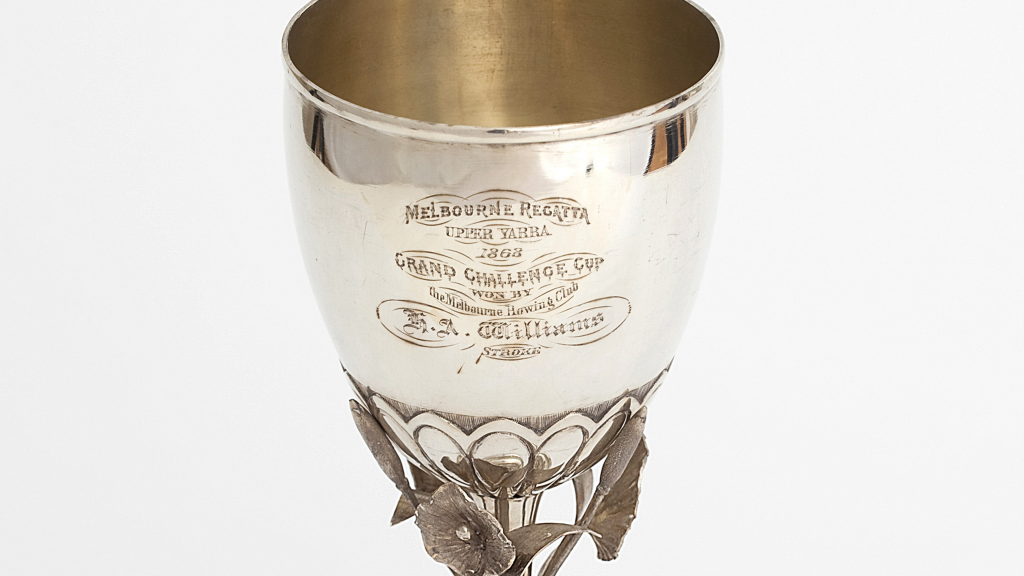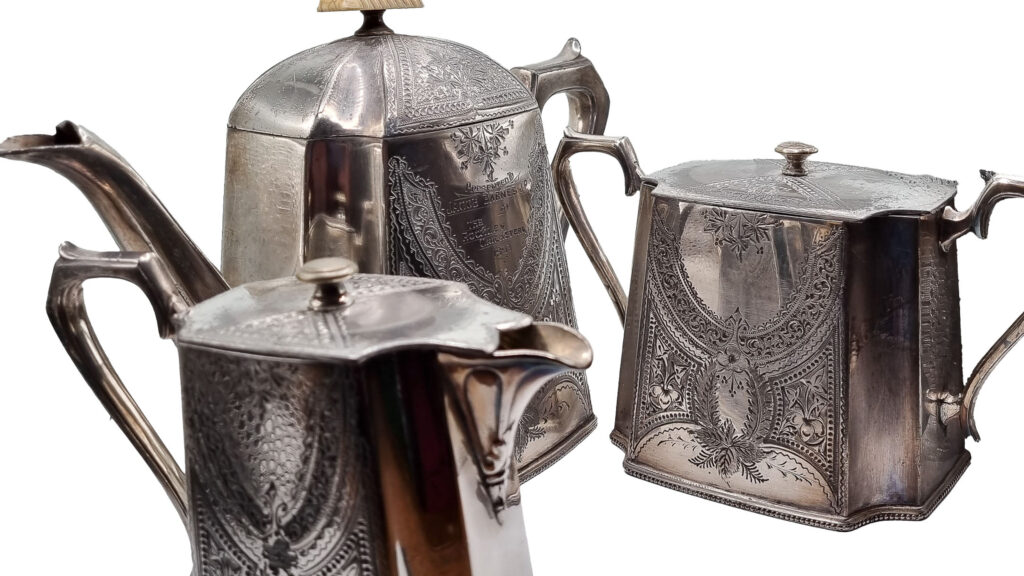
Forget the Chappells, Marshs, Waughs and Lees. The Barnes family were the original cricketing family. The patriarch, Jacob Barnes (1840–1930) the father of Rockley cricket, was a fearsome batter and successful wicket-keeper and he certainly earned this silver tea and coffee service. The service, including an inscribed tray, was presented to Barnes to commemorate his […]
Read More…
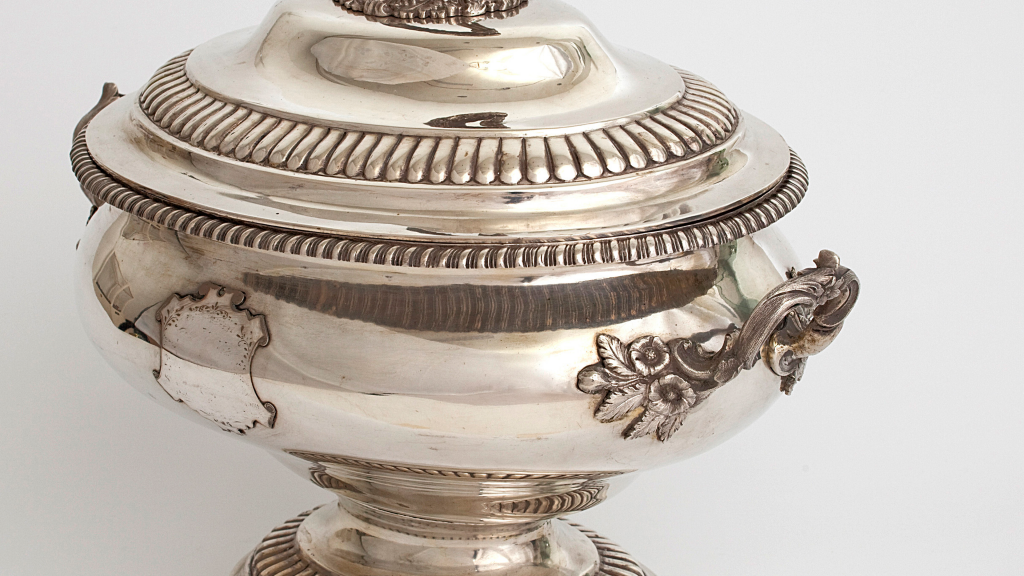
When it comes to design sensibilities today, I think many would describe this tureen as somewhat gaudy – particularly because any extravagant covered dish for serving soup would be a strange addition to modern dinner tables. However, this style of decorative art was once considered the height of refinement. Emerging from the salons of early […]
Read More…
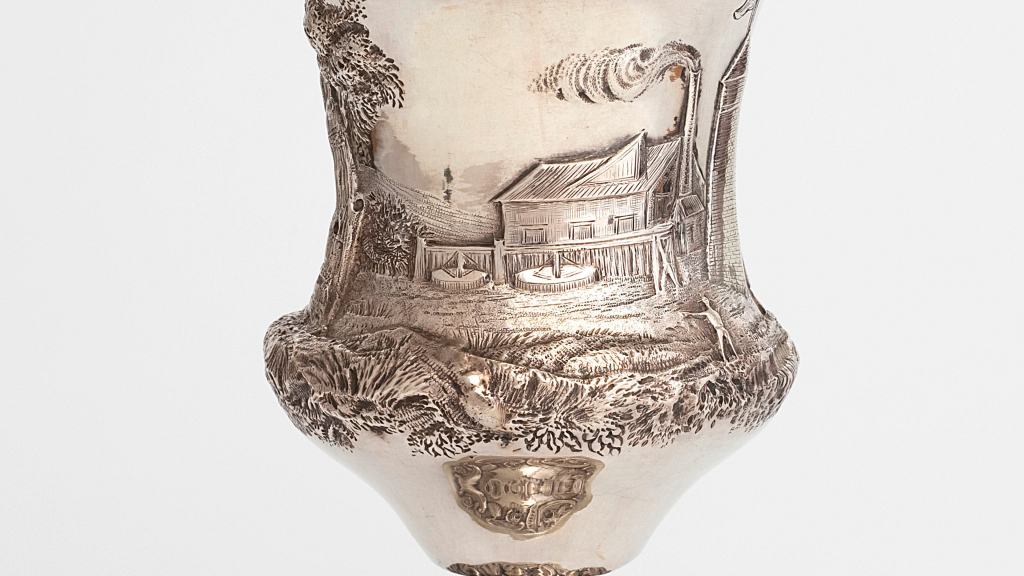
One step removed from the sweltering heat of the forge, smoke billows from a chimney between towering trees. Small figures are at work around the refinery – surveying, shoving, and squatting. Steep slopes of earth disappear into the distance of a spotless sky. This sterling silver goblet was made by William Edwards (1819-1899) and retailed […]
Read More…
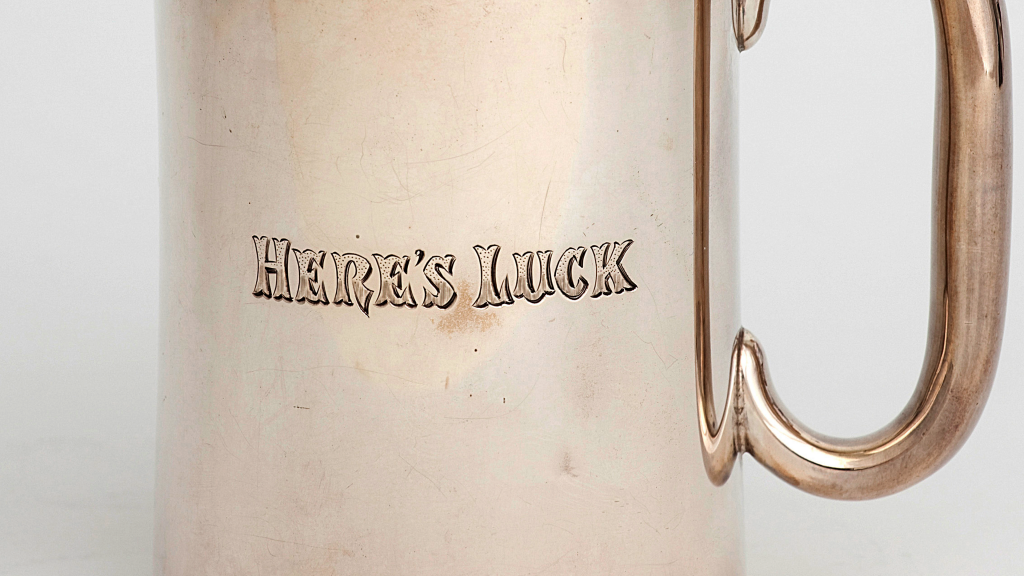
Before the 1850s, Australian silverware was incredibly scarce. The nature of settlement, including a low population and lack of materials, meant silversmithing was an extravagance. That is, until the discovery of silver, especially in Broken Hill, made it possible for a few talented craftsmen to become prolific manufacturers. Joachim Wendt (1830-1917) was one of the […]
Read More…
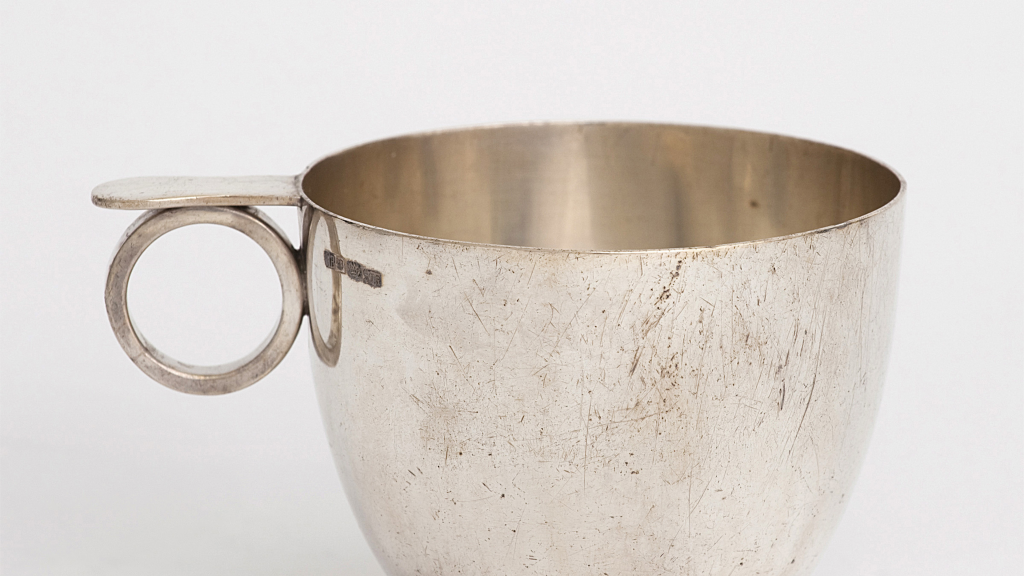
This little silver mug, with its matching porringer bowl, might have been presented to the parents of a fortunate baby in the early 1900s. Baby-sized sets of silver tableware have been popular christening gifts since they were first introduced in Stuart England. Given by godparents, they were a kind of good-luck charm, invoking prosperity and […]
Read More…
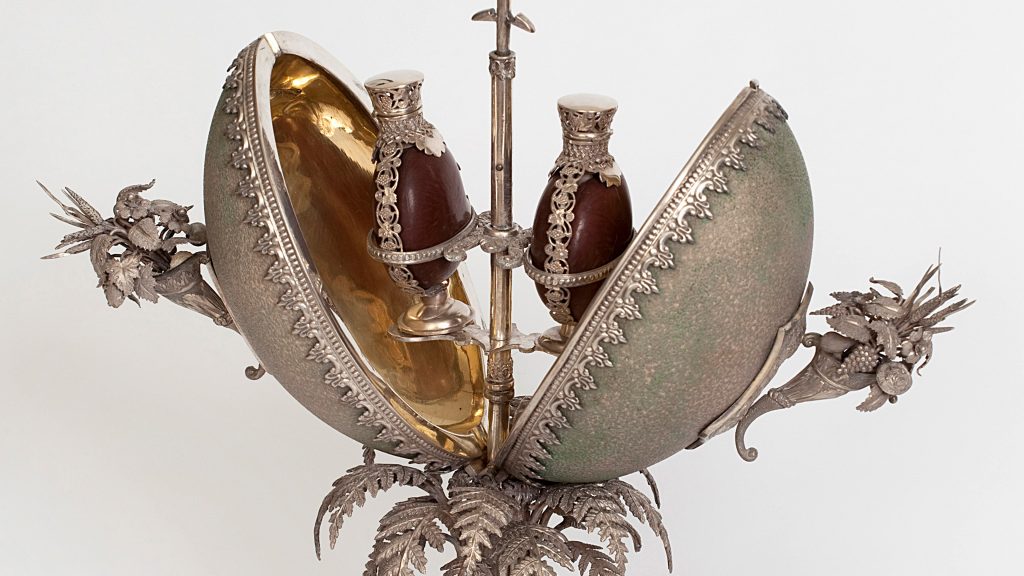
The mid-nineteenth century gold rush brought smiths and jewellers to Australia intent on reaping the benefits of a newly prosperous Australia. In 1858, Henry Steiner (1834-1914), a German silversmith, immigrated to Adelaide, South Australia, for that very reason. Now known as one of Australia’s most prolific silversmiths, much of his success was made possible by […]
Read More…
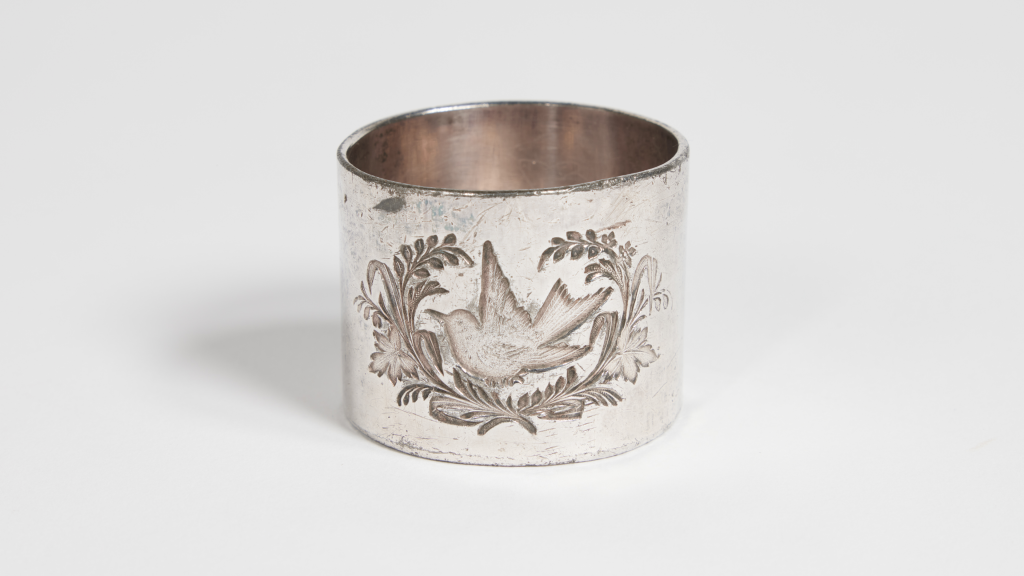
These napkin rings belonged to the Wilson family of Berry. James C Wilson (1834-1901) emigrated to Australia in 1857 and found work on the Berry Estate, before co-founding Wilson and Co. Store, establishing other business interests that included coal mining, and becoming Berry’s first Mayor. Around 1880, with wife Robina nee Tait (1849-1918), the Wilsons […]
Read More…
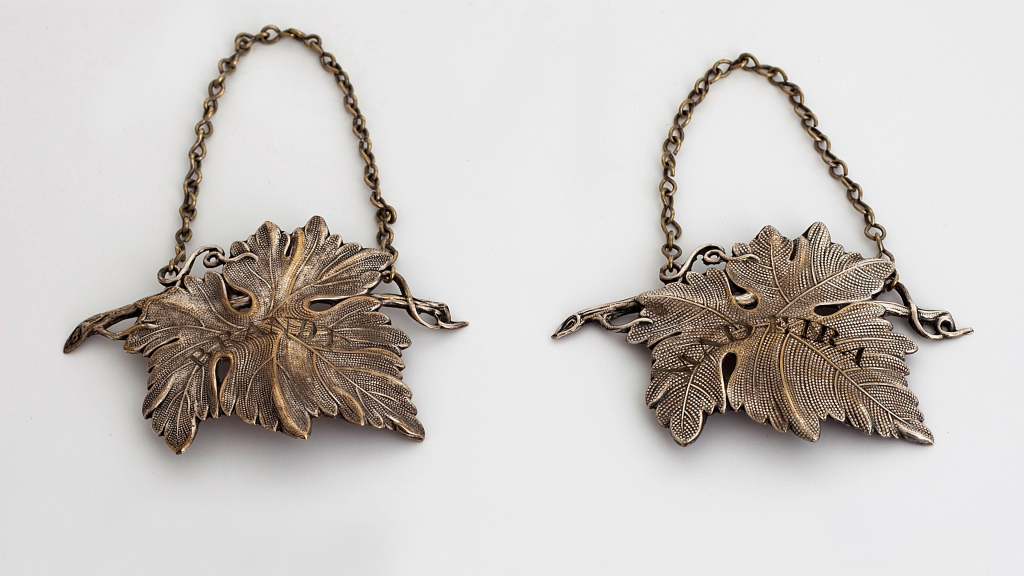
In the days before the twentieth century’s marketing of alcohol with distinctive bottles and branded labels, alcohol was decanted at home into glass decanters. Wine labels, or ‘bottle tickets’ as they were sometimes known, were hung on the necks of decanters to identify the contents within – in this case, madeira and brandy. Decanters and […]
Read More…








